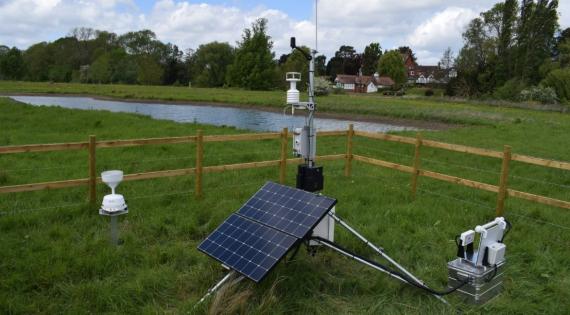The UK Centre for Ecology & Hydrology (UKCEH) has teamed up with environmental charity Earth Trust to use artificial intelligence (AI) to monitor wildlife at an Oxfordshire wetlands site.
An autonomous biodiversity monitoring station has been installed on the Clifton Meadow floodplain adjacent to the River Thames, south of Burcot. It will record the calls of birds and bats, and photograph small mammals and moths. UKCEH scientists will then use AI software to identify species. Measuring equipment will record rainfall, wind speed and humidity to complement data on the site's biodiversity.
Earth Trust has been working with neighbouring landowners to create a series of wetland habitats in the area as part of its River of Life projects, in order to improve water quality, biodiversity, carbon sequestration and flood alleviation. The monitoring station is set to remain at Clifton Meadows for many years, and by tracking changes to species richness and atmospheric conditions at the site, Earth Trust can scientifically demonstrate the value of wetlands. It will also share data from the monitoring station via social media.

